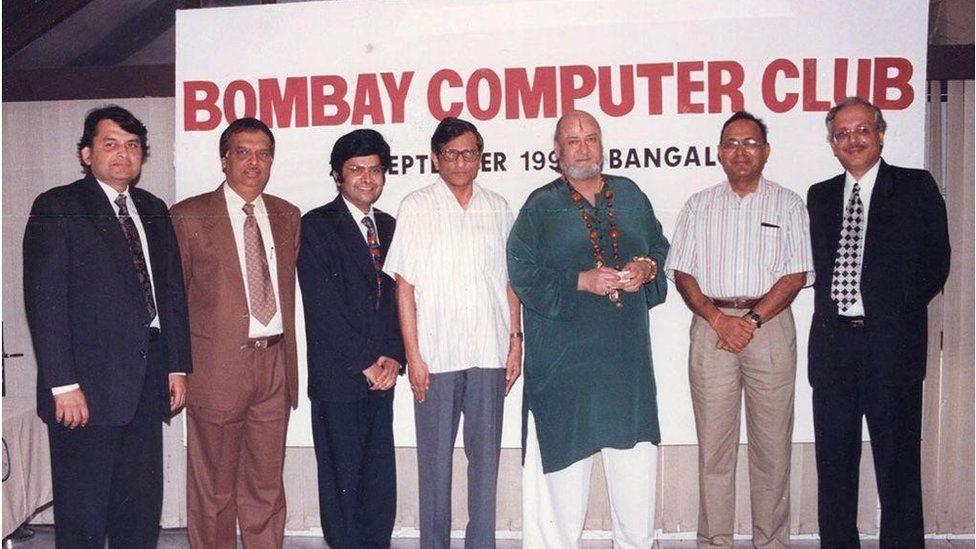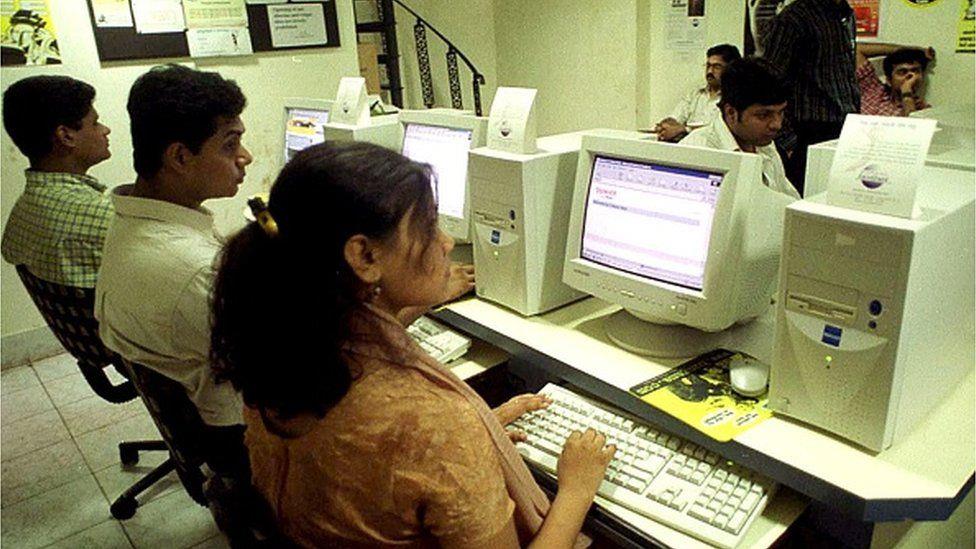(MENAFN- NewsIn.Asia)
July 18 (BBC) – In the early days of the internet in India, the man responsible for establishing some of the subcontinent's first online connections was besieged with calls from harried ministers and bureaucrats.
As Brijendra K Syngal was to recount later, they were all complaining about the pornography easily available on the net. What is this ashleelta (a Hindi word for vulgarity) that you have brought into the country? they asked.
For similar articles, join our Telegram channel for the latest updates. – click here
ADVERTISEMENT
Syngal shot off a brusque reply to his powerful critics.
“Sir, my job is to provide connectivity. It is not my responsibility what an individual uses that connectivity for. If 2% or 3% of people use it to watch pornography, I am not interested. I am interested in serving the 97% of the population who are interested in getting linkages to global knowledge.”
Syngal, who died aged 82 earlier this week, was known as“the father of the internet” in India.
As the head of VSNL, a formerly state-owned monopoly for international telecom, Syngal launched the internet in five Indian cities – Delhi, Bombay, Kolkata (then Calcutta), Chennai (then Madras) and Pune – on 15 August, 1995.
Newspapers gleefully called it India's“Second Independence Day”. India was among the first countries in Asia to have a commercial internet service.

The euphoria, Syngal recounted later, quickly turned into a nightmare.
Dial-up access, using modems, and bad connectivity meant delayed connections, busy signals, dropped calls and a disconnection“every three minutes”.
Customers trying to access the internet from cities outside the chosen five had to make long-distance calls at a prohibitive 35 rupees ($0.44; £0.37) a minute. Internet tariffs were“obscene”: individuals had to cough up an eye-watering 15,000 rupees for an account. Businesses had to pay 25,000 rupees. A text-only account came at 5,000 rupees.
“Quite simply, the charges were too much, the quality of service was poor,” Syngal recounted.
He wondered whether internet in India was a good idea when“we were so ill-equipped”. Unlike many of his stodgy counterparts in the government, what Syngal did next was audacious: he called in the media and admitted:“I goofed up. I goofed up big time”.
He told reporters that his market intelligence was wrong, and that the service was plagued by“serious” technical problems.
“It was a bit of an amateurish venture,” he said. Syngal then asked Indians to give him 10 weeks to fix things.
“I can assure you that at the end of 10 weeks, possibly before that, you will have a system that India will be proud of,” he said.
Syngal and his team created a bank of servers, got the phone department to improve connectivity, pushed modem makers to ensure quality devices, moved from copper to fibre-based cables, and slashed tariffs by half and more.
He found his state-run firm was weak at marketing, so he got private franchise to sell internet services. Customers could now carry over unused data.
He recounted it took about eight weeks for India to get the new system up and running and stable. He took ideas from British Telecom and AT&T, and even an early group of Indian internet enthusiasts that included Bollywood actor Shammi Kapoor to make the service more robust, user-friendly and popular. Kapoor was among a handful of Indians who had been using the internet since 1994 on a gifted beta online service account launched by Apple that year.
In 1997, Vijay Mukhi, a member of the Internet Users Community of India, raved about the arrival of internet:“We were nowhere in the global scene until a couple of years ago. Now global software companies send me messages: Can you work with us?” he said at the time. Aniruddha Malpani, who runs one of India's leading fertility clinics, prophesied that Indian doctors without the internet were“going to become obsolete”.
In his memoirs, Syngal fondly recounted the early days of the internet. He said a man from Bangalore would call him up every time his connection was down,“saying that his livelihood was being affected”. Later he discovered that the consumer had been commissioned translation work by a France-based organisation.

An internet cafe in India in 2000 – today India has more than 800 million broadband internet subscribers
During his seven-year stint with VSNL, Syngal's initiatives also helped kickstart India's software revolution. He called in the industry leaders who promptly asked for affordable, high-speed lines.
Data transfers were pitifully slow and eating up to 10% of their revenues. Syngal ensured that VSNL would work with global telecom providers and provide high-speed links in six months. In The Maverick Effect, a new book on India's info-tech revolution, Harish Mehta, one of India's tech pioneers, says Syngal did“outstanding work” for the industry by providing data links year after year.
Still India needed access to physical undersea cable connection to power the internet.
India needed to cough up more than $100m for a share of the cable. He was told this money was out of question as the country had only few weeks worth of foreign exchange left. So he went to the cable consortium, made them agree to staggered payments and secured forex loans. The deal was signed in 1991, and connectivity began three years later.
Syngal became a bit of a hero. In 2000, on a holiday, the owner of an upscale handicraft shop in Rajasthan recognised him and asked:“Are you the Mr Syngal who brought the internet to India?. It changed my life”.
The son of a civil servant father and homemaker mother, who migrated to India in 1947 in the wake of the bloody partition, Syngal went to Indian Institute of Technology (IIT), the country's top engineering school.
During his work life, the electronics engineer lived in tents in jungle, hills and deserts setting up microwave towers and laying coaxial cables. He was a fiercely competitive professional:“I loved competition but I loved killing the competition even more,” he said once.
Twenty-seven years after it got the internet, India has more than 800 million mobile broadband subscribers in what is the world's second-fastest digitising economy. The country is also a software powerhouse, with exports of services exceeding $130bn.
Much of this credit should go to the maverick“father of India's internet”.
Subscribe to our Telegram channel for the latest updates from around the world
MENAFN18072022000191011043ID1104548225